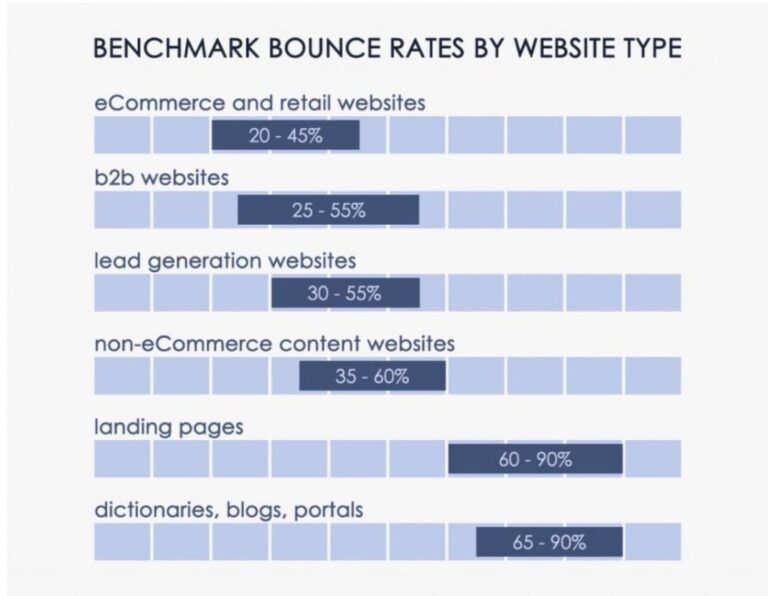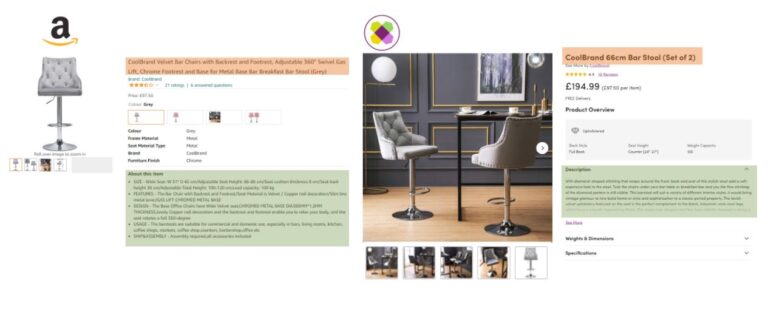
It doesn’t really matter whether you’re new to the e-commerce game or you’ve been selling on marketplaces for years — the pace of change is enough to overwhelm even the most seasoned veteran.
New marketplaces sprout up. Consumer expectations change. What’s a marketer to do? Stick to these 10 best practices for consistent performance in a volatile industry.
10 Best Practices to Improve E-Commerce Sales
1. Focus on the customer.
Consumers are at the heart of all commerce — and they know it. They expect to be treated with convenient, transparent and personalized shopping experiences that are worth their while (and money).
That’s not to say customer-centric practices don’t benefit the seller too. In fact, creating more meaningful interactions with consumers on e-commerce marketplaces can have a direct impact on sales and revenue. Engage with your buyers regularly and stay in tune with customer sentiment by:
- Strengthening your return policies
- Proactively monitoring reviews
- Staying active on social media (especially in the channels where your target demographic interacts most)
2. Entice consumers with appealing content.
No one likes a drab online experience. Consumers may even link the look and feel of your website or your brand elements to the quality of your products. But you don’t have to be a design studio to keep up either. Stay relevant in the minds of consumers with e-commerce site best practices like:
- Matching branding and online experiences to target audience expectations (e.g., using bright colors and modern slang to appeal to teens)
- Decluttering website pages
- Using high-quality images with diverse models
- Keeping site and page navigation simple
- Writing content that proactively addresses shopper questions and concerns
3. Keep product descriptions fresh.
As your product data is fed to marketplaces and transformed into listings, high quality content can be the difference between a product that stands out and one that gets buried. But even if you have killer content, it can quickly go stale. Regularly assess product descriptions to account for popular search terms, proactively answer shopper questions and update for product enhancements.
Too much to manage? Successful brands rely on robust data feeds to ensure product information not only meets the unique standards of each marketplace, but stays fresh.
4. Expand your advertising.
No matter which marketplaces you sell on, make sure you’re taking advantage of the full suite of advertising options available to you. Every seller is different, so the key is to experiment, develop and measure targeted ad strategies that work for you and your products.
On Amazon, that means not only building campaigns for Sponsored Products, Sponsored Brands and Product Display Ads, but also using your search term reports to mine new keywords, experiment with bidding and target your competitors’ ASINs. On Walmart, you should make the most of Promotions Manager and Promoted Listings to create offers that grab the attention of buyers and encourage them to spend more.
5. Stay competitive on price.
Modern consumers have become acutely aware of the wide range of options for purchasing the same product at different prices. That means it’s no longer your item details and imagery alone that capture attention. Developing a dynamic pricing strategy is essential to marketplace success. To stay competitive, consider using:
- Automated repricing, which automatically adjusts pricing based on the current competitive landscape. The key is to use a system or tool that aligns your competitive prices across channels so you can keep your pricing consistent across marketplaces.
- Velocity pricing, which makes real-time adjustments in product prices based on sales trends. Whether you want to extract more margin on fast-selling products or lower prices when sales start to slow, this type of technology will make it easier to meet your goals.
6. Demonstrate strong fulfillment.
To truly excel on e-commerce marketplaces, fast and affordable fulfillment is critical. But in the era of same-day deliveries, it can also be incredibly costly and time-consuming to provide. Managing fulfillment across marketplaces can become complex, but many platforms offer their own services, including Fulfillment by Amazon (FBA) and Walmart Fulfillment Services.
If your fulfillment operations still involve spreadsheets and manual tasks, it’s time to put things on autopilot. The more you automate, the better equipped you’ll be to speed up delivery times and cut down on shipping costs. Successful sellers often use:
- Intelligent order routing to select the quickest, most affordable delivery method for each and every order
- Automated inventory management to ensure levels stay up to date with each order, across multiple marketplaces
- Automated shipment tracking to mark packages “shipped” as soon as delivery is initiated
7. Keep tabs on the competition.
There are nearly 2 million sellers on Amazon, and they’re all vying for the same consumer attention. To compete, you need to regularly assess your competitors’ advertising and sales position. By regularly evaluating factors like delivery times, pricing of similar products and feedback ratings, you can gain a solid understanding of what they need to drive more sales.
This is especially true on Amazon, where the ability to identify small changes as they occur can make all the difference. Some marketplace management solutions automatically gather key competitor metrics in a competitor dashboard, allowing you to:
- Identify opportunities for improving buy box performance
- Track the average number of competitors per ASIN
- Stay up-to-date on top sellers offering your products
- Keep tabs on which products Amazon is selling directly
- Discover the 100 best Amazon sellers in any category at any time
- Know when it’s time to act on MAP and proprietary ASIN violations
- Identify competitors who are advertising on your product detail page
- Develop an offensive strategy for product targeting/competitor targeting
8. Sell on social.
Global internet users now spend an average of 2 hours and 27 minutes on social media every day. It makes sense to not only meet them there with advertising, but provide an easier path to purchase. Social commerce has become prevalent among younger shoppers especially. In fact, 58% of 18-25-year-olds have researched products on Instagram.
Plus, engaging in social commerce is an e-commerce best practice that does more than give your customers another place to buy. It also provides a chance to connect directly with consumers who seek out products that match their interests and lifestyle.
9. Monitor performance.
Run your e-commerce business on reliable data, not hunches. Tracking performance in each marketplace you sell on or investing in brand analytics software gives you the insight and benchmarks you need to identify areas for growth and improvement. Having e-commerce performance data in the following categories is particularly helpful:
- Assortment and availability. Track out-of-stock rates, buy box ownership and loss rates, assortment strength among top online retailers and number of product URLs across your network.
- Prices and promotions. Keep tabs on MSRP deltas, days below MSRP, significant price drops, MAP infringements and engagement in brand-led promotions.
- Search and digital shelf. Make sure shoppers can find your products with insight into share of top-of-page products, share of search on brand and category terms and share of sponsored result on priority keywords.
- Content and reviews. Ensure the highest performing content by tracking metrics for each product like average consumer rating, content title and description length, number of images on page and percentage of pages with full content compliance.
10. Expand to new marketplaces.
If you’re serious about growing an e-commerce business, marketplace expansion is a must. The key is to determine which marketplaces best fit your product catalog. Getting your products in front of the right consumers might mean moving beyond the big players to more niche marketplaces. Or it may be time to start selling to international consumers through options such as Amazon Global Selling and eBay Global Shipping.
Either way, develop a strategy to keep marketplace management from becoming overwhelming. For most e-commerce companies, the easiest solution is relying on one centralized platform that’s built to integrate with dozens of different marketplaces for optimized listings, fast fulfillment and more.
ChannelAdvisor Helps You Stick to E-Commerce Best Practices
At ChannelAdvisor, we’ve watched the industry and the marketplaces within it change over the course of 20+ years. In that time, we’ve taken note of what works best and what doesn’t. Sure, policies change and trends come and go, but the one constant is carefully monitoring your e-commerce program to ensure the strongest content, smartest advertising and greatest appeal among consumers. Our Managed Services team combines the power of ChannelAdvisor technology with award-winning expertise to help you reach new customers — and new heights for company growth.
Request a demo to learn how ChannelAdvisor can help you apply today’s e-commerce best practices for the greatest market impact.
Editor’s Note: This post was originally published in February 2020 and was updated in November 2022 for accuracy and comprehensiveness.






